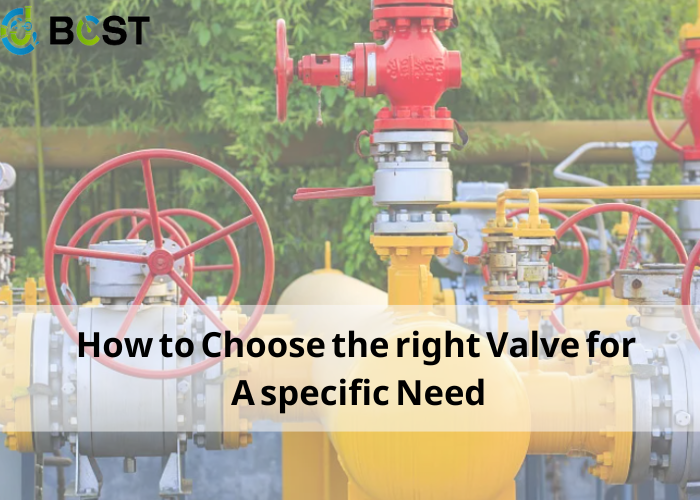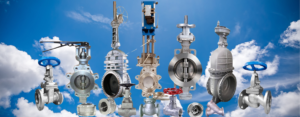
I. Important factors affecting valve selection
Valve selection can seem like a daunting task because of the many types of valves, which can even be customized. Regardless of the characteristics of the application, the impact on safety and effectiveness is always a top priority. Here are some important factors to consider when selecting the right valve.
01 Line pressure
Not all fluid systems are pressurized to the same level. The type of service varies, as does the pressure required. However, the entire system should be able to handle the required service within a reasonable safety margin.
Exceeding the design pressure limit means failure of valve operation. Fluid leakage is a common consequence of exceeding pressure limits and can lead to line losses and safety issues. Any additional stress beyond the valve’s design parameters can also damage sealing components and may lead to valve degradation.
When selecting a valve based on the line pressure of a piping system, the process engineer should evaluate the required pressure drop across the valve and the entire piping system. The internal structure and specifications of the valve should provide minimal frictional resistance to keep the pressure drop across the valve low and reduce pipeline pressure losses, which may affect subsequent production processes. This is why gate valves are preferred over globe valves in industrial piping systems where line pressure needs to be kept constant.
02 Flow rates
Different types of valves and their different operating mechanisms require fluid flow to be managed in different ways. For example, ball valves provide an excellent seal for shutoff applications. However, needle valves can provide better precision to control a specific flow rate. Depending on the inner workings of the valve, it is possible to understand how the working fluid is controlled and how the desired function is performed.
Switching applications require the valve to allow or restrict flow. An excellent example of a ball valve that operates with a quick response is the hollow spherical sphere, in which case it either opens or blocks the flow of fluid. Gate valves provide the same function – shutting off flow – using a plate or as a blocking tool for the gate. Butterfly valves can also provide open and shut off fluid service using a metal disk (butterfly) that completes a quarter-turn rotation around a fixed axis to open or shut off the fluid.
03 Temperature
Like pressure, temperature affects the characteristics of the medium flowing through the pipeline and the valve itself. Temperatures vary, as does the amount of energy the working fluid has. Extreme temperature conditions can also increase the corrosive effects of fluids on some materials. Individual valve components may also be composed of several materials with varying high and low temperature tolerances.
As temperatures increase, fluids, especially gases, typically take up more space. Gases expand and contract with temperature. High-temperature air and other gases tend to have lower densities, which can increase pressure ratings if the fluid is confined or increase flow rates if the fluid is just passing through. In this case, valves need to be considered for higher pressure ratings or more precise incremental flow control.
In addition to affecting the fluid flowing through the system, temperature ratings also affect the valve and its components. Materials typically shrink at low temperatures and expand at high temperatures. Since valves are composed of many different materials, temperature differences can result in uneven changes in valve components.
04 Budget
Budgetary constraints need to be considered when selecting a valve. Different types of valves have different manufacturing costs associated with them. The type of valve material and intended control medium will influence the valve construction material to meet any special requirements and budget. Valve operation and automation customization can also incur additional costs. The use of actuators requires more specialized components, which can also mean increased costs.
II. Consideration of the type of valve
Valve selection is not a preference-driven choice. Instead, most considerations come from meeting specifications for utility and operating conditions.
Ball valves are designed to meet industrial fluid applications and are a good starting point for valve selection. They provide a reliable seal and are suitable for on-off applications. Because the hollow portion of the ball allows unobstructed flow of fluid when open, the pressure drop across the valve is minimized. While most ball valves are suitable for medium and high pressures, larger ball valve applications can use trunnion-mounted ball valves to provide additional mechanical support for stability.
If the user desires a slower flow release, of all the valves, gate valves are the appropriate choice. This preference is more applicable to water systems that require additional consideration for water hammer effects. For any other application, gate valves also have the advantage of being less costly than other valves.
For flow control functions, needle valves offer high accuracy. Typical applications include gas calibration and pipelines carrying clean fluids such as propane. For industrial high-flow functions, ball valves are a more economical choice.
Globe valves impede or permit flow with a flapper element that linearly adjusts its position. This element is usually combined with a screw-type control device that permits a gradual increase in flow. Increasing or decreasing the amount of opening proportionally affects the flow rate, thus enabling control. Different configurations of globe valves also enable different flow patterns, such as cross-flow and Y-flow arrangements.
Butterfly valves are another alternatives for industrial piping systems. They have a compact and lightweight design that makes them more responsive to pressure changes in the pipeline while providing excellent sealing characteristics. A wide range of butterfly valve designs are available to meet the pressure and temperature requirements of industrial fluid systems.
In a variety of applications, design considerations should include evaluating the appropriate valve material, regardless of valve type. The toxicity and any corrosive properties of the fluid require materials that can cope with chemical losses. High or low temperature conditions also require the appropriate type of material.
Ⅲ. Conclusion
Regardless of the type of valve design that is ultimately used, maintaining safe and efficient operations is always a priority. When selecting valves for different fluid applications, it is recommended to maintain communication and cooperation with a valve specialist to ensure that the proper specifications are selected and the productivity of the industrial process is maximized.






